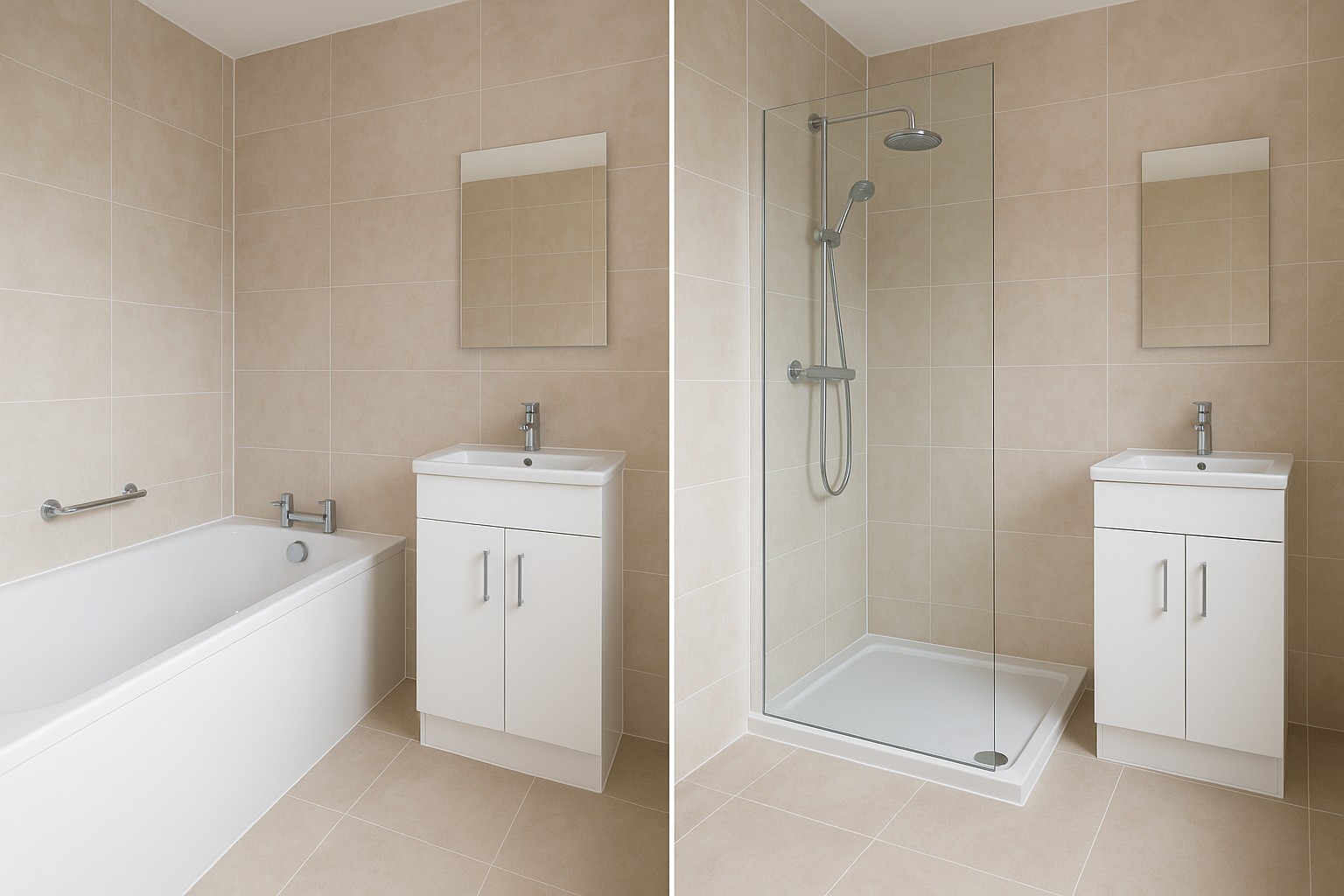
Changing a Bath to a Shower – Hidden Implications Homeowners Often Miss
A Seasoned Plumber’s Perspective – Should it stay or should it go?
When homeowners think about replacing a bathtub with a walk-in shower, they usually imagine a sleek, modern upgrade. However, from a seasoned plumber’s viewpoint, the process is far more involved than it first appears. While the finished result can absolutely transform a bathroom, the steps required to get there often uncover issues that designers, sales teams, and even DIY renovators do not consider.
Therefore, before you commit to removing your bath, it is essential to understand the practical implications, the hidden challenges, and the areas where the plumbing system may require significant modification.
Why Homeowners Choose to Replace a Bath With a Shower
Many homeowners naturally prefer a shower because it offers improved accessibility, a cleaner layout, and modern aesthetics. Additionally, a walk-in shower can make a small bathroom feel noticeably larger. However, although these advantages are attractive, a plumber must first assess what lies behind the tiles, under the bath, and beneath the flooring to determine whether the conversion is truly straightforward.
1. The Tiling Problem: What Happens When You Remove the Bath
One of the biggest and most common issues is tiling height. Most bathrooms are originally designed with a bath, so the tiling typically runs from the top edge of the bath to the ceiling—not all the way down to the floor.
What This Means Once the Bath Is Removed
Once the bath is taken out, the entire lower portion of the wall becomes exposed. Unfortunately, this area is usually:
-
Bare plaster
-
Unpainted or damaged
-
Poorly finished
-
Not waterproofed
-
Sometimes patched or uneven
Because a shower exposes the wall to constant water contact, not just the occasional splash, this incomplete surface becomes a major concern.
Consequently, the wall must be:
-
Repaired
-
Waterproofed
-
Re-tiled completely or at least partially
Tile Matching Problems
Furthermore, attempting to match new tiles to old ones almost never works seamlessly. Tile batches vary, discontinued lines are common, and colour differences are very noticeable.
As a result, many homeowners end up re-tiling the entire bathroom even though they hadn’t originally planned to. Ultimately it comes down to the level of finish the homeowner expects. Some people are happy with a patch however some people want a perfection and for many trades it is impossible to know which one of the two the homeowner is.
2. Shower Valve Pipework Is in Completely the Wrong Place
Another significant challenge involves the position of the hot and cold water supplies. Bath taps are usually installed at low level and supplied by pipework that is easy to access. However, a shower valve—especially a concealed one—must be positioned far higher up the wall.
Why This Creates Extra Work
Unlike bath taps, shower valves require:
-
Hot and cold feeds that run vertically up the wall
-
Precise pipe centre measurements
-
A secure fixing point inside the wall
-
Thorough waterproofing
-
Accurate installation depth for the valve body
Because of this, the existing pipework often needs to be completely re-routed, which can involve:
-
Removing tiles
-
Opening stud walls
-
Chasing into brick walls
-
Replacing plasterboard with stronger backer board
-
Extending or resizing the pipework
Therefore, what initially seems like a simple bathroom upgrade can quickly become a more involved plumbing project.
3. Drainage and Waste Pipe Adjustments Often Become Necessary
Although many homeowners assume a shower uses the same waste as a bath, this is only partially true. A bath waste sits much higher off the floor, allowing water to drain easily. A shower tray or wet room, however, sits significantly lower.
Because of this:
The waste pipe may need to be:
-
Lowered
-
Re-routed
-
Extended
-
Upgraded in size
-
Notched through floor joists (within regulation limits)
If lowering the waste is not possible, then a raised shower tray with a step might be the only practical solution.
4. Flooring Strength and Tray Stability Must Be Considered
Unlike a bath, which spreads weight evenly across a wide area, a shower tray concentrates weight along specific points. Moreover, once a bath is removed, the flooring beneath is often:
-
Uneven
-
Rotten or water-damaged
-
Weak
-
Patch-filled
-
Not suitable for direct tray installation
Therefore, the floor may need reinforcement, levelling, or full replacement before the new shower can be safely installed.
5. Ventilation Becomes Even More Important
Because showers produce much more steam than baths, ventilation must often be upgraded.
Thus, a plumber may recommend:
-
A more powerful extractor fan
-
A humidistat-controlled model
-
Extended ducting
-
Additional venting where necessary
Without this, mould, condensation, and peeling paint become ongoing issues.
6. Will Removing a Bath Reduce Property Value?
The impact on property value depends largely on the home layout.
-
If the home has more than one bathroom, removing a bath is usually fine.
-
If it has only one, keeping at least one bath is often advisable for family buyers.
However, because modern walk-in showers are increasingly desirable, especially for accessibility, replacing a bath with a shower can still increase appeal—provided it is done correctly.
A Seasoned Plumber’s Final Thoughts
Changing a bath to a shower can indeed modernise your bathroom, improve accessibility, and make the space more practical. Nevertheless, this upgrade requires far more consideration than most homeowners initially realise.
A professional plumber must evaluate:
-
Tiling height and wall condition
-
Waterproofing needs
-
Pipework location and rerouting
-
Waste and drainage suitability
-
Flooring strength and stability
-
Ventilation requirements
Ultimately, the conversion is entirely achievable, but the complexity depends heavily on the existing bathroom structure. With the correct preparation and expert workmanship, the result can be a durable, stylish, and highly functional shower installation that will last for many years. If you would like to change a bath to a shower please feel free to contact us for advice and work estimate.
